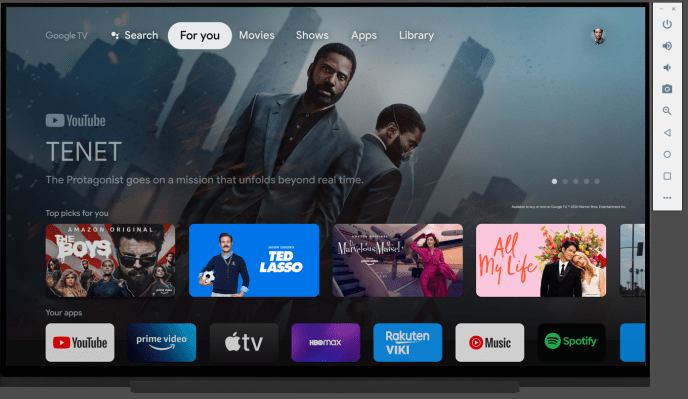Apple’s Journal app is kind of smart — and kind of basic
The Journal app itself is incredibly basic — it’s the Moments page that’s really interesting. | Image: David Pierce / AppleThe Apple Journal app is so simple that, at first, it felt like I was missing something. The whole...
/cdn.vox-cdn.com/uploads/chorus_asset/file/25038993/Apple_Journal.jpg)
The Apple Journal app is so simple that, at first, it felt like I was missing something. The whole app is just one screen: a reverse-chronological timeline of your journal entries, with a big plus button down at the bottom. I hit the plus, and an overlay appeared with some options: tap “new entry” at the top, or respond to one of Journal’s “reflection” prompts. “What could you do to make someone’s day better this week?” one of them asks. “Write about a time you found an unexpected solution to a hard problem,” reads another.
When you’re creating a journal entry, you can add photos and video, record a voice memo, or log a location associated with your entry. When you’re looking at the timeline, you can filter to see only the entries with photos, or the extra-special entries you’ve bookmarked, but that’s about it. You can have the app remind you to journal every day, too. I don’t know what I expected from an Apple-made journaling app, really, but it is very much… just a journaling app — and a pretty basic one at that.
As far as I can tell, there are two reasons the Journal app, which is coming to iPhone users in iOS 17.2 and is in public beta right now, exists at all. The first is that health and wellness are important to Apple as a company, and there’s lots of evidence to suggest that regularly journaling in some way is a good thing. The second is that, in a lot of ways, your phone is actually the perfect place to keep a journal — because it can kind of do it for you.
The big idea behind Apple Journal is that your phone can learn to recognize what Apple calls “Moments.” It can look at where you were, who you FaceTimed with, how many videos you took, and other signals that only your phone has access to and deduce that this was probably something you’d want to remember and revisit. Your phone is the only device that both knows you were on the phone with your boyfriend for an hour and that immediately afterward you listened to 11 straight Dashboard Confessional songs. It knows that you hit a personal record in your marathon training today and that you finished the run at a sick view from the top of a mountain. With access to all that information, Journal could, in theory, start to put things together and prompt you to not only add them to your personal timeline but also take a moment to reflect on them. Apple is coy about exactly how it all works, though, and exactly what signals matter and how.
Image: David Pierce / Apple
This is a really intriguing idea, especially because Apple is making this tech — which Apple calls a “suggestions API” for Moments — available to other third-party journaling apps as well. All the machine learning and processing happens on your device, and the app you’re using only gets information about Moments once you pick one to add. (The only part of Journal that isn’t completely local is the iCloud backups, which are themselves encrypted.)
It’s also, I should say, a total minefield. Remember when Facebook’s On This Day feature used to show people horrible memories they’d rather not relive and revisit? Journal has access to even more data and could do even worse. As my colleague Victoria Song wrote back in June, “If your camera roll is like mine, it’s a jumble of happy, serene, infuriating, vain, mundane, and melancholy moments. It’s messy because life is messy. And if the Journal app truly takes a page from Apple’s Memories feature, there’s a good chance it’s going to tactlessly ambush you with memories you either don’t want or aren’t ready to see.”
You get some control over what data Journal uses to suggest Moments, and you can also just turn them off entirely if you want. But those are all on / off switches, and it’d be nice to see Apple offer some more fine-grained controls over time.
So far, I can’t vouch for how any of it works because I’ve only been using Journal for a couple of days, and it hasn’t once offered me a moment to include. (And I’ve been taking moody pictures and listening to Taylor Swift the whole time!) But it’s going to be fascinating to see how Apple handles the moment generating process and how and whether other apps choose to integrate the suggestions API. Third-party apps won’t be able to insert their stuff directly into the Moments system, but data from any app that uses SiriKit, CallKit, or HealthKit could funnel into suggestions as well. Again, the exact alchemy behind Moments remains somewhat mysterious.
Image: David Pierce / Apple
The other way to get things into Journal is through the iPhone’s share sheet. You can save links and media from the web or lots of other apps, and Journal saves a rich link back to the source. The intentions here seem to be good (I can play a Spotify track right in my Journal timeline), but the execution is off in spots. (It doesn’t realize I’m a subscriber and just starts the free preview.) In general, Journal definitely won’t replace your bookmarking app or read-later service, nor is it trying to; this app is so focused on being an easy place to create and review journal entries that it won’t even let you have tags or folders.
At least for now, I suspect Journal might appeal as an entry-level journaling app but is not likely to convince many people to dump their existing diary. (I’m a longtime Day One user, and nothing in Journal makes me want to switch.) It’s absolutely true that your phone knows you unlike any other device you have, and Apple’s probably right to try and figure out how to use that to improve your life.
But I think about all the times my Apple Watch yells at me to stand while I’m sick in bed, and I wonder how well my devices actually do know me. And I wonder how I feel about the idea that my phone even could get it right. Are we really just a collection of the stuff we do on our screens, and is it our responsibility to teach our devices to understand us better? Is that the AI future we’re looking for?
Sorry to get all existential on you there. Tends to happen when I’ve been journaling a lot.

 Aliver
Aliver 
































